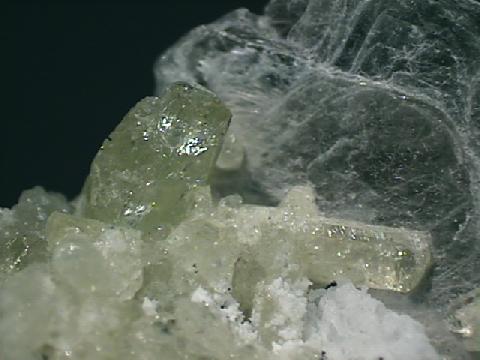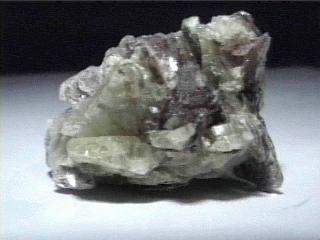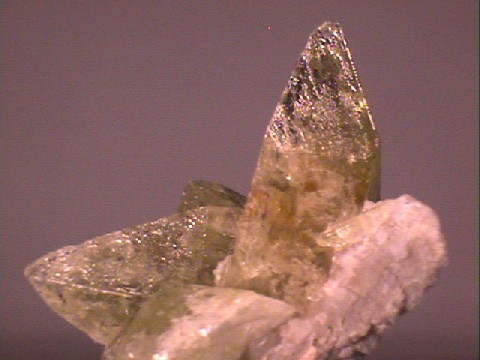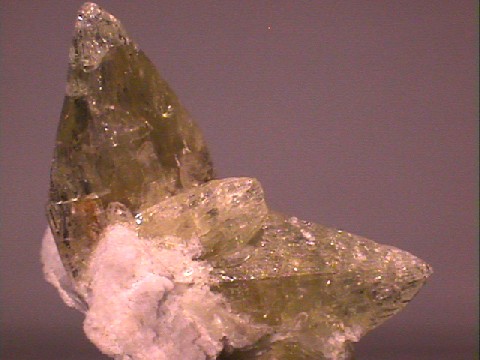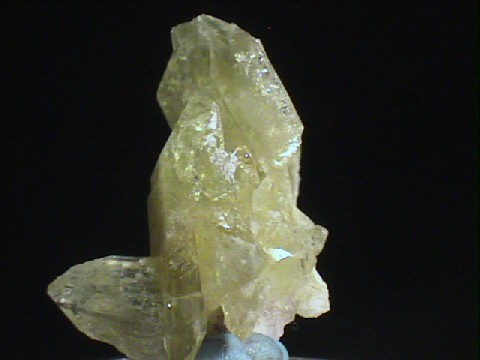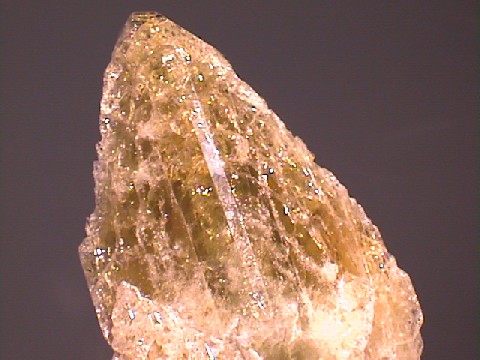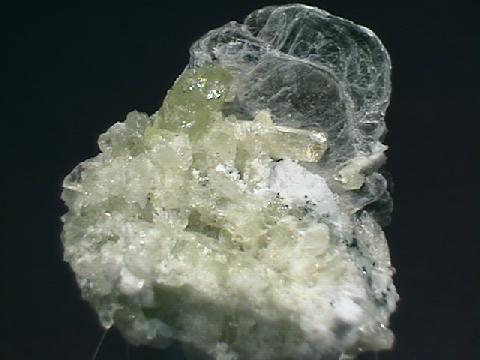
BRAZILIANITE
Specimen bra-3
$ 55.00
Dims: 1.9" x 1.9" x 1.3" (4.8 x 4.8 x 3.3 cm)
Wt: 1.67 oz. (47.5 g)
Linopolis, Divinodas Laranjeires, Minas Gerais, Brazil
This specimen shows a lot of damage, as most of the Brazilianite crystals therein are either heavily intergrown, broken, or both. There are several, however that are intact and undamaged, though they tend to be quite small. The largest discernable crystal has dimensions of 0.6 x 0.4 x 0.2" (1.5 x 1.0 x 0.5 cm); it is missing a substantial part of its termination, but its monoclinic prismatic form is evident. All of these crystals show a pale yellow color that is subtly tinged with green and have a bright, vitreous luster. They are transparent and moderately clear, though even the intact crystals show noticeable internal fracturing. Along with the tangle of Brazilianites are a small piece of what looks like a white feldspar, and an intact "book" of muscovite of impressive quality; it shows no damage, and though its shape is rounded and warped in some spots, it is quite attractive. There is no host rock present.
